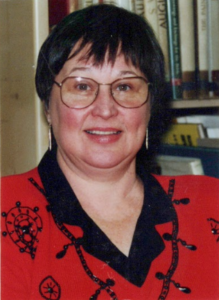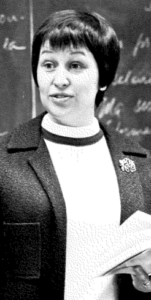Kathy Richardson

I was 21 when I started teaching, so I really grew up at the school. I pretended I was at least 25, but I don’t know if I fooled anybody. A student later told me, “We knew you were about a minute older than we were.” Most of the Hillsdale teachers when I arrived in 1961 were formidable war horses, as I saw them. The students all wore uniforms and the uniforms had to come to the middle of the kneecap. The girls would try to pull the tunics up under the belt, so they’d be shorter. The teachers had to stand and watch them coming into the daily morning assembly, and we’d practically measure the skirt length. The students had to stand in the classroom until the teacher said, “Please be seated.” The levels of respect were intended to be quite visible.

I stayed home for a number of years when my daughters were young, and when I returned to teaching — this time at CPS in 1972 — it was shortly before the merger. The merger, to put it lightly, was not lovely. A lot of the CPS people always felt they’d gotten short shrift in terms of resources. The little gym at the Red Bank campus was subdivided into four classrooms, and they weren’t soundproof. We tried to merge departments, and there were differences in philosophies. One teacher told me it felt like an invasion. It took time for the school to really come together.
As a parent, of Lisa and Julianne, I just couldn’t have been happier with the school — the incredible caring of the teachers, the collaboration with parents, the lack of hierarchical thinking, the sense that every child really was precious.
In the 1970s, my daughters attended Doherty, which had become an Individually Guided Education, or IGE, school. It was wonderful in terms of having kids set their own goals, not just having goals superimposed upon them. Our daughters, even in second grade, would take responsibility for laying out their clothes the night before. By third grade, they were making breakfast for the family. We loved seeing self-sufficiency take root as a result of the education they were receiving. I felt that if I could be part of changing somebody else’s children’s lives the way my colleagues have shaped my daughters’ lives, then my life would be worth it.

In my classroom, I loved that kids really wanted to learn and were bright and fun and responsive. I don’t think I could have taught there for 42 years if that weren’t true; I would have burned out. I used to tell students when they complained about my being picky about sentence structure and punctuation and grammar, “I am teaching you to be future Justices of the Supreme Court and to write good opinions.”
I felt most alive when I stood in front of a class with a novel in my hand. The ideas in literature are just so profound. What you’re really teaching is life. That’s why I loved teaching books like “The Catcher In The Rye” and “A Separate Peace.”

I always thought my job was to help educate and integrate both the head and the heart — there’s my nod to Nathaniel Hawthorne. An “A” student is not necessarily an “A” person, just as a “C” student is not necessarily a “C” person. Seven Hills is constantly aware of that. Students appreciate that our feedback as teachers is coaching rather than judging. I think that’s one of the best things about the school. It’s never us versus them. It’s always we. Even at the end of my career, my attitude toward my students was, “I happen to be 50 years ahead of you in life, but I’m not smarter. I’m here to take you as far as you will go, and I know that you will go even farther.”

